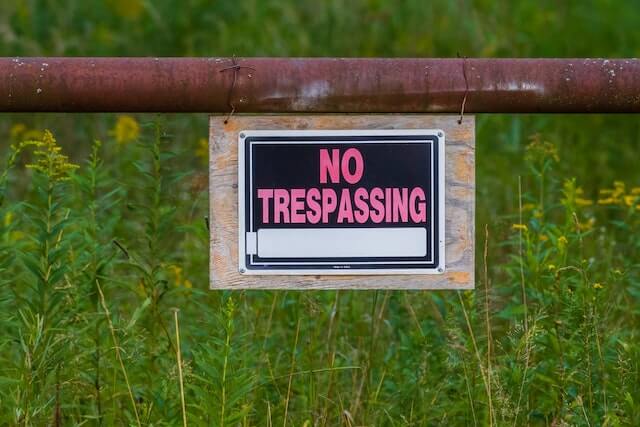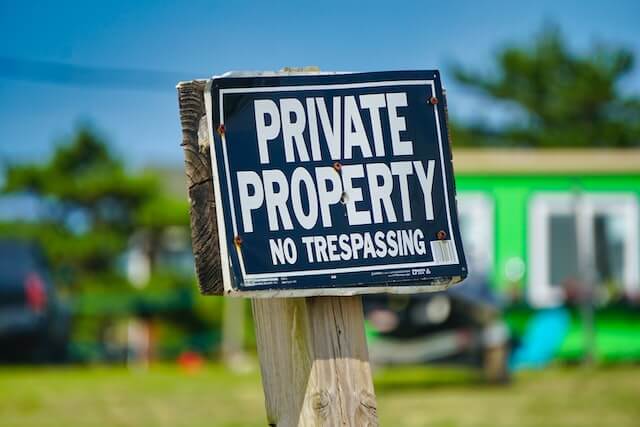For many landlords, having a squatter on your rental property is their worst nightmare. Not only is rental income lost, but if the squatters can’t easily be removed from the home, costly legal fees can add up quickly.
As a landlord, it’s important to know the legislation in your state around squatting so that you’re prepared to act quickly if the situation arises for you. This article will go through what squatting is, when squatter’s rights apply, what your recourse is, and how to avoid getting squatters in the first place.
What is a squatter?
Squatting is when someone who doesn’t own a property or have permission to be there occupies a home and claims to be the rightful owner.
There are currently several million properties with squatters in the US. Squatter’s rights are a holdover from the gold rush and European colonization of the US, when land ownership was a chaotic system and rules weren’t consistently established or applied. During this time, occupying an area of land was often enough to win you ownership of that land, and squatter’s rights have their root in those laws.
The most common way squatting currently happens in the US is when previous tenants who once legally rented or leased a home overstay their lease without renewing or continuing to pay rent. After certain steps are taken by the landlord, this person can be classified as a squatter. In other cases, rental homes that are unoccupied for long periods of time are vulnerable to squatters if they’re not properly looked after.
Previous legal tenants who become squatters is the most common situation, but there are other ways that a landlord may find themselves with a squatter on their hands. With millions of mortgages in the US in some stage of foreclosure, many homeowners simply walk away and abandon their homes. Many of these homes are not tended to by the banks that now own them and sit vacant for years. Squatters take advantage of these abandoned homes and move in with movers, sometimes living there in exactly the same lifestyle as their neighbors but without actually owning the property.
In other cases, the homeowners who default on their mortgages keep living in their homes, resulting in years of legal battles until they’re finally removed.
What’s the difference between squatting and trespassing?
The difference between squatting and trespassing may seem small on paper, but there’s a big difference. Squatters live in a home that they do not own and do not have permission to be in, but they claim that the property is theirs. Trespassers also live in a home without permission, but they don’t make a claim of ownership.
Is a holdover tenant a squatter?
These terms can get easily muddled, but the simple answer to a complex question is that holdover tenants can become squatters if the rightful owner takes legal steps to have them classified as such.
Holdover tenants – people who run out their leases but continue to live in the home without paying rent – don’t become squatters the day their lease runs out. The process varies by state, but you as the landlord must take steps to have the occupant classified as a squatter before action can be taken by law enforcement to remove them.
What is adverse possession?
Adverse possession means a long-term squatter can have the ownership of the home they’ve been squatting in legally transferred to them. This process requires a lot of requirements to be met, all of which differ from state to state. If a squatter lives in a home for a long enough time, it’s possible for them to win legal ownership. Requirements include making a hostile claim and having exclusive possession of the property.
How do squatters gain access to a property?
There are a few main ways a landlord may find a squatter in a rental home.
- They were a previous tenant – Holdover tenants becoming squatters is the most common way that landlords find themselves in this situation.
- The property was vacant – Vacant properties that are untended and not properly managed are common targets for squatters.
- The trespasser is a rental fraud victim – In some cases, someone falsely claims to own a home and rents it out to a tenant who is none the wiser. At some point, the tenant finds out that the home is not actually owned by the person who rented it to them, and they were unknowingly trespassing. This has become more common with sites like Airbnb and Vrbo gaining popularity.

What are squatter’s rights?
The goal for true squatters isn’t to just stay living in the home they are occupying, but to gain legal possession of the property. Squatter’s rights lay out the requirements that occupants must meet to make a claim of adverse possession and have the property legally transferred to them.
These requirements aren’t easy to meet, says Shannon Steinberg, CEO of Allied Van Lines. In most cases – even if it involves a legal battle – squatters are removed from the home, and the home stays in the possession of the landlord.
To claim adverse possession with the goal of having the deed transferred to their name, a squatter must do the following:
- Make a hostile claim – The squatter must be aware that they do not own the land, despite claiming that they do.
- Have exclusive possession – The occupant can’t be sharing the home with anyone else, particularly the rightful owner.
- Have open & notorious possession – The squatter can’t be living in the home in secret. They must be living openly in the home the same as any other homeowner would. Secretly living somewhere is akin to admitting that you don’t actually own the property. Squatters must claim to own it, or else they’re simply trespassing and can be removed by law enforcement.
- Have actual possession – The squatter must live on the property and treat it as if it were their own.
- Have continuous possession – The squatter can’t leave for long periods of time and come back. An exception may be made for vacation homes, where a normal homeowner wouldn’t occupy the home consistently.
As a landlord, it’s part of your job to make sure you know the particulars of squatter’s rights in your state. Make sure you’re in the know by checking on your state’s laws here.
How to get rid of and avoid squatters
Can you remove a squatter?
The best case scenario is that you serve the squatter their eviction notice, and they leave quickly and without damaging your home or property. Regardless, there are steps you should follow as soon as you become aware of an unauthorized person living on your property, suggests Jasen Edwards, the chair of the Agent Editor Board of Agent Advice.
- Notify the police – As soon as you find out an unauthorized person is living in your home, notify the police. Even if there isn’t a prolonged process to get them out, you want it to be on record as soon as you’re aware of the situation.
- Serve a formal eviction notice – You should issue an eviction notice to anyone who’s living in a home you own without permission. Whether they wilfully leave or not, you need to have that on record.
- File an eviction lawsuit – If the squatter doesn’t leave after you serve them with an eviction notice, it’s time to hire a lawyer and move things into the court system.
- Remove squatter’s possessions – Removing the squatter’s possessions from your property can be an extra step towards getting them to leave. While you can’t throw the items away, you can hold them for a time because the squatter isn’t a lawful tenant. This also varies based on your state, so make sure you know the rules in your area.
How do you avoid having a squatter?
Deterring potential squatters from targeting your home is by far the best way to avoid getting into this situation. As a landlord, there are several ways you can drastically reduce the likelihood that a squatter will end up occupying your rental property.
- Install outdoor security cameras – Cameras are a great way to deter squatters, vandals, and burglars. A dome security camera system is recommended for large apartment blocks.
- Ensure that doors and windows remain securely locked at all times – Blocking easy access to your rental property by making sure all potential entrances are locked at all times can make all the difference. If you need small repairs made to window or door locks, find a local handyman that can make sure this gets done quickly.
- Routinely check the property for any signs of entry or occupancy – Frequent activity in your rental home will keep potential squatters from targeting your home. People looking for abandoned foreclosures look for homes with signs of disrepair or neglect, so make sure your unoccupied rental property stays in good condition and visit it frequently.
- Screen prospective tenants – Taking the time to screen potential tenants before signing a rental agreement is a necessary step to safeguard your property from squatters. Call references, verify employment, and always meet prospective tenants in person before agreeing to rent to them.
Another important step that homeowners can take to protect their homes against potential damage or loss caused by squatters is to have appropriate home insurance coverage.
While most standard home insurance policies do not cover damage caused by illegal activities, such as squatting, there are insurance options that can provide additional protection. For example, some insurance companies offer specialized coverage specifically designed for properties that are vacant or unoccupied for extended periods of time.
This type of insurance typically covers damage caused by events such as vandalism, theft, and fire, which are common risks associated with vacant or unoccupied properties. In addition, some insurance policies may offer coverage for legal expenses associated with removing squatters from the property.
Homeowners who are concerned about potential damage or loss caused by squatters should speak with their insurance provider to determine what coverage options are available to them. It’s important to review the policy carefully and understand any limitations or exclusions related to unauthorized occupation or illegal activities.
In general, the best way to protect your home against squatters is to take a proactive approach. By keeping your property secure, maintaining it properly, and having appropriate insurance coverage, you can minimize the risk of squatters and protect your home and investment.
Things you can’t do
- Remove the squatter yourself – Don’t ever attempt to remove a squatter on your property yourself. Doing that may quickly escalate the situation, and you don’t want to put yourself in the situation of being charged with harassment, assault, etc.
- Threaten the squatter – Don’t do anything against the law in an attempt to get the squatter to leave. This opens you up to potential criminal and civil charges. Despite how frustrating and stressful these situations can be, the best thing you can do is to follow the steps outlined by your state laws.
- Change the property’s locks or cut off utilities – While these things might seem like logical steps to take to get a squatter to leave your property, they aren’t recommended because they can be seen in a negative light by a court. To keep the tide moving in your favor, leave these things alone.
Having a squatter is never a good situation. As a landlord, you’re losing revenue and spending valuable time fighting a battle that you didn’t ask for. However, there are several steps you can take to avoid the situation altogether.
Landlords should always be knowledgeable of what the squatter’s rights are in their state. Knowing this can help you to act quickly if there is a potential issue, and it’ll help you to avoid the drawn-out process of removing a squatter from your property. Taking steps to vet potential renters, making sure that your property is in good condition, and visiting often when it’s vacant are the best ways to deter would-be squatters from targeting you in the first place.




